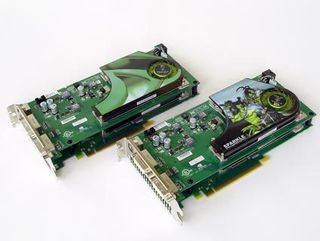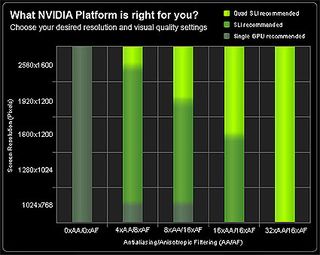Nvidia's Response to Early DIY Quad-SLI
It's For "A Select User Base"

On Monday we posted an article showing that Quad-SLI could be enabled via a public driver on Nvidia's enthusiast website. The results we got with Quad-SLI under the 91.33 driver left us dazed and confused: What logically is the "most powerful" graphics solution on the market should blow the competition out of the water - but it did not deliver what should have been a slam dunk case.
Only a few games in our test suite were completely overhauled by the scaling inherent in Quad-SLI. At high resolutions with image quality enhancements like antialiasing and anisotropic filtering, Quad-SLI is a mover and shakes the boat. However, at lower resolutions and without the quality enhancements Quad-SLI looks less than stellar.
After posting the story on Monday we received emails and phone calls from Nvidia and Nvidia-based graphics cards makers. That night we also received a newly published reviewers' guide to help explain some of the issues Quad-SLI is suffering from. Subsequent telephone calls laid out some steps that Nvidia is taking to improve Quad-SLI experience and take multi-processor graphics to the next level.

Without sounding like an Nvidia marketing department, it was stressed that "Quad-SLI is targeted at a select user base that demands the absolute highest quality rendering at extreme resolutions. In essence, the Quad-SLI user is most interested in fantastic image quality at high resolutions." Nvidia provided a marketing graph to show where it intends enthusiasts to make use of its Quad-SLI technology. This is target for Quad-SLI and we cannot argue that this market is for the extreme.
What we want to address in this article are the responses and explanations for performance variances in Quad-SLI ersus single and dual graphics. We want to open this up to the community and see what makes the beast tick. So put on your wetsuits, we're diving in.

Join our discussion on this topic
Stay on the Cutting Edge
Join the experts who read Tom's Hardware for the inside track on enthusiast PC tech news — and have for over 25 years. We'll send breaking news and in-depth reviews of CPUs, GPUs, AI, maker hardware and more straight to your inbox.
Most Popular

